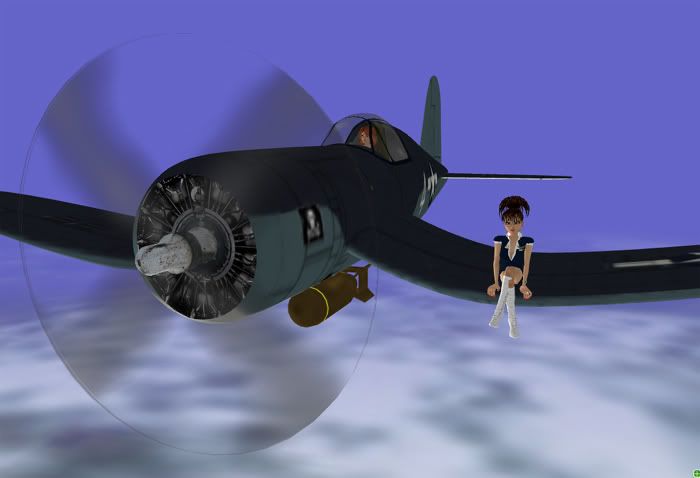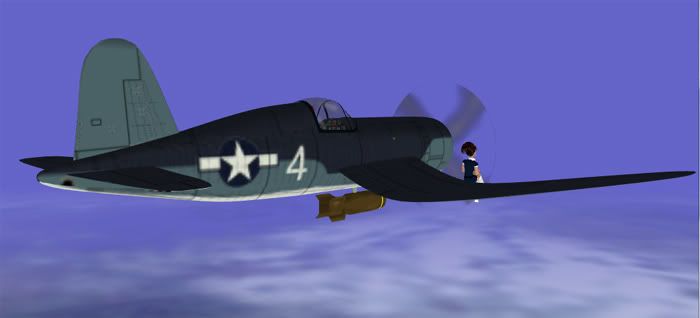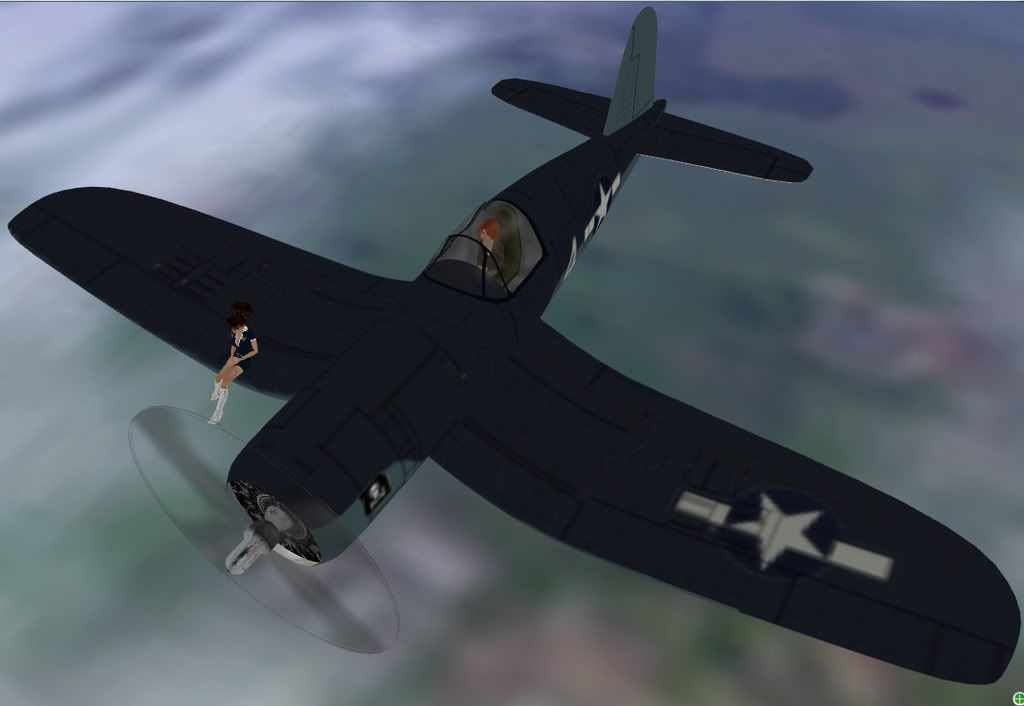Three seating nodes: one in the cockpit, and one on each wing! Watch the video! Woot! This aircraft is painted in the colors of VF-17, the Jolly Rogers Squadron, representing aircraft No. 4.
NEW FEATURES ADDED 3/9/2008!
Now includes an animated propeller and two sounds!
Engine sound, continuous loop, trigger: engine
Short burst from the .50 Caliber machine guns, trigger: guns
Derivable! Click the icon below for the derivable version!

The Corsair started life as the result of a U.S. Navy requirement for a carrier aircraft which could match the performance of the best land and carrier-based fighter planes. Designed in 1938 by Rex Biesel, the first prototype Corsair designated XF4U-1 first flew on 29 May 1940. When flown in 1940, the XF4U-1, powered by a Pratt & Whitney R-2800 Double Wasp radial engine, became the first U.S. single-engine production aircraft capable of 400 mph (640 km/h) in level flight. It was a remarkable achievement for Vought, as compared to land-based counterparts, carrier aircraft are "overbuilt" and heavier to withstand the extreme stress of deck landings.
Check out this sweet video by LadyWallace featuring the Corsair! Please note that the plane does not actually move as it does in this video.
The Corsair first entered service in 1942. Although designed as a carrier fighter, initial operation from carrier decks proved to be troublesome. Its slow-speed handling was tricky due to the port wing stalling before the starboard wing. This factor, together with poor visibility over the long nose (leading to one of its nicknames, "The Hose Nose"), made landing a Corsair on a carrier a difficult task. For these reasons, most Corsairs initially went to Marine Corps squadrons who operated off land-based runways, which in turn led Goodyear to build some early Corsairs with fixed, non-folding wings. The USMC aviators welcomed the Corsair with open arms as its performance was far superior to the F4F-3 and -4 Wildcat, which were being used at that time, and superior in a number of ways to the F6F Hellcat, which replaced the Wildcat.
My lovely model is Rumour1313!




